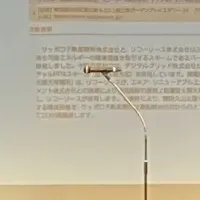
Desert Control and Woodland Hills Country Club Sign Major Water Conservation Agreement
Desert Control and Woodland Hills Country Club's Impactful Partnership
In a significant move toward water conservation in the golf sector, Desert Control, through its U.S. arm Desert Control Americas Inc. (DCAM), has finalized a service agreement with Woodland Hills Country Club (WHCC). Announced on April 11, 2025, this collaboration follows a Memorandum of Understanding (MoU) established on December 9, 2024, and sets the stage for a groundbreaking approach to irrigation management and cost reduction.
Overview of the Agreement
The newly executed contract will see Desert Control implement its proprietary water conservation solution over 43 acres of WHCC's golf course. The deployment is set to begin during the week of April 15, 2025, with full operational status expected by May. This transformative initiative not only aims to enhance the course's ecological footprint but also anticipates generating monthly recurring revenue (MRR) for Desert Control, based on actual water cost savings.
The essence of the agreement lies in the Pay-As-You-Save (PAYS) model. This innovative framework places Desert Control in the position of funding the implementation process, while its revenue will come as a share of the verified savings achieved through reduced water consumption. By comparing current water usage against a historical baseline and factoring in the established water rates, the model ensures transparency and reliable revenue calculations which are tied directly to measurable outcomes.
Financial Implications
The potential value of this five-year agreement surpasses NOK 8.5 million, contingent upon achieving over 25% in water savings. For WHCC, this partnership is poised to alleviate one of its most significant operational expenses—irrigation—while ensuring that the golf course maintains its high-quality standards. Desert Control stands to benefit from a predictable, performance-linked MRR stream, thereby converting initial investment costs into long-term revenue based on validated results.
Marty Weems, Managing Director of Desert Control Americas Inc., emphasized the mutual benefits of this arrangement. He stated, “This agreement reflects the kind of results-based partnership that makes good business sense. Our solution helps WHCC save money on water expenses while enhancing value for our shareholders by creating recurrent revenue streams from guaranteed results. Given the frequent spikes in water costs, efficiently managing irrigation is essential for golf course sustainability.”
Environmental and Incentive Alignment
Desert Control's water conservation solution is recognized by major incentive programs offered by the Metropolitan Water District of Southern California (MWD) and the Los Angeles Department of Water and Power (LADWP). The WHCC initiative qualifies for these incentive programs, which aligns perfectly with the financial model based on savings, thus enhancing the overall return for involved clients.
This partnership showcases Desert Control's ability to transform potential opportunities into contracted revenue agreements, highlighting its growth strategy in California and other regions facing high water costs. Furthermore, the company’s local value chain and domestic sourcing of materials position it favorably against international market fluctuations.
Desert Control's commitment to promoting sustainable practices not only supports the golfing community's economic viability but also reflects broader environmental goals in water conservation. As WHCC anticipates positive cash flow benefits right from the beginning of the agreement, this project exemplifies how innovative solutions can resolve pressing environmental challenges while preserving the operational quality of essential recreational spaces.
In summary, this collaboration between Desert Control and Woodland Hills Country Club marks a promising step forward in the realm of water conservation, illustrating the efficacy and necessity of sustainable practices in today's changing climate. As organizations increasingly seek to address environmental challenges, partnerships like this pave the way for future innovations in the field.
Topics Environment)










【About Using Articles】
You can freely use the title and article content by linking to the page where the article is posted.
※ Images cannot be used.
【About Links】
Links are free to use.